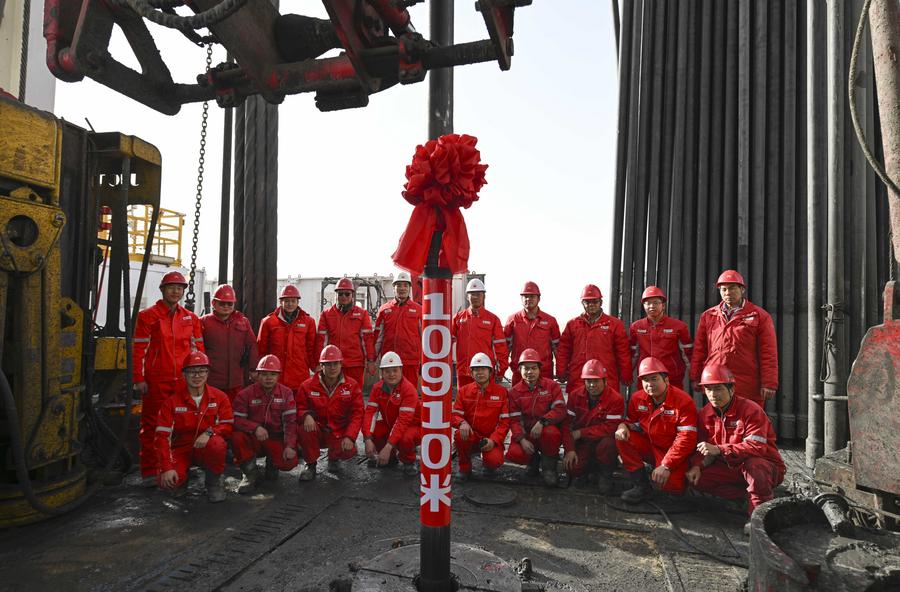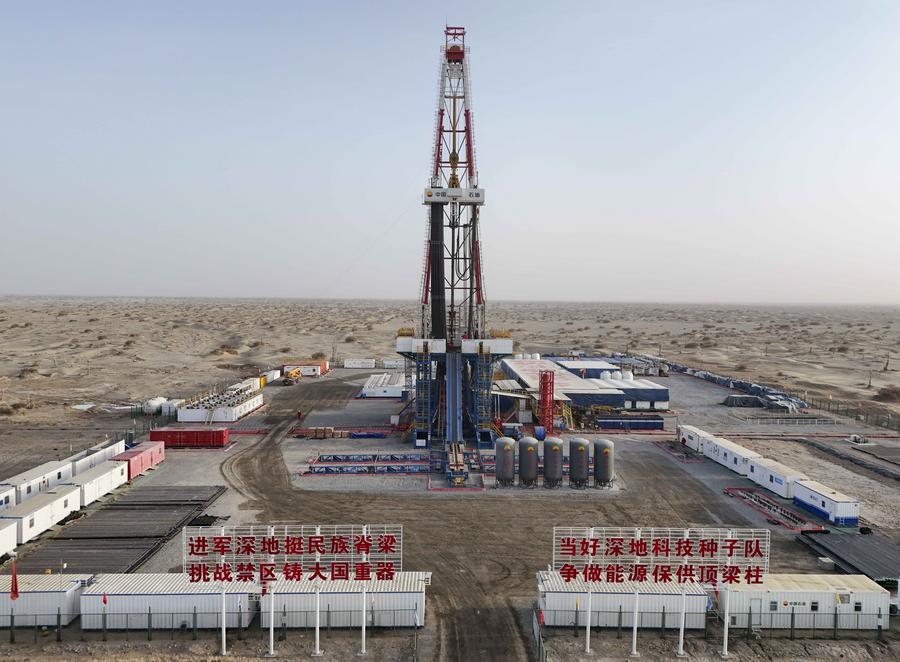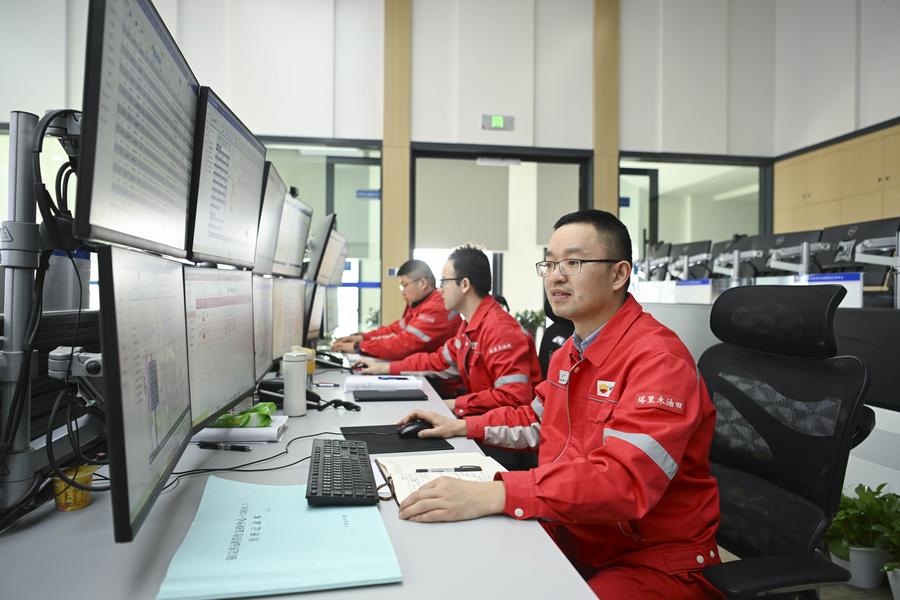The completion of drilling for “Shenditake 1,” the world’s second deepest vertical well, has enhanced China’s capabilities in ultra-deep oil and gas exploration.
The Tarim Basin, China’s largest deep-earth oil and gas reservoir, holds 83.2% of the country’s deep oil resources and 63.9% of its deep natural gas at depths exceeding 6,000 meters.
On Thursday, it was announced that the deepest vertical well in Asia had been successfully drilled, reaching a depth of 10,910 meters in China’s northwestern desert.
Situated in the heart of the Taklimakan Desert within the Tarim Basin, Xinjiang Uygur Autonomous Region, the well, named “Shenditake 1,” serves as a scientific exploration project.

The successful completion of this well has bolstered China’s ultra-deep oil and gas exploration capabilities. Leveraging advanced domestically developed drilling technologies and equipment, scientists have also made significant strides in understanding Earth’s history, geological evolution, and ancient climate patterns.
SETTING NEW RECORDS
The Tarim Basin, home to vast deep-seated oil and gas reserves, is flanked by the Tianshan and Kunlun mountains. However, its extreme surface conditions and complex underground structures make it one of the most challenging regions to explore.
As the world’s second-deepest vertical well, “Shenditake 1” has achieved multiple engineering milestones, including the deepest liner cementing, deepest wireline imaging logging, and fastest onshore drilling to surpass 10,000 meters.
According to CNPC, drilling commenced on May 30, 2023, and required over 580 days to reach its final depth of 10,910 meters. The final 910 meters alone took approximately 300 days due to escalating technical challenges.
“Every additional meter increases drilling complexity exponentially,” said Min Peng, director of the drilling platform, who has been stationed on-site throughout the project.
Following relentless efforts, the well successfully penetrated 12 geological formations, ultimately reaching rock layers dating back over 500 million years.
Wen Liang, a lead technician on the “Shenditake 1” project, highlighted the immense challenges faced during drilling. “We overcame a series of technical difficulties, including extreme loads, wellbore instability, and formation leakage. Ultimately, we succeeded in reaching the target depth,” he stated.

OVERCOMING WORLD-CLASS CHALLENGES
If venturing into space is an extraordinary feat, delving into the Earth’s depths is equally formidable.
At 10,000 meters below the surface, temperatures soar beyond 210°C, hot enough to vaporize cooking oil, while pressure exceeds 145 MPa, surpassing the crushing forces at the deepest point of the Mariana Trench.
“At these extreme depths, China’s ultra-deep drilling technologies and downhole tooling systems are pushed to their limits. Drilling was as challenging as our lunar exploration programs,” said Sun Jinsheng, an academician of the Chinese Academy of Engineering.
To tackle this world-class challenge, the Tarim Oilfield assembled an interdisciplinary task force of nine specialized technical teams, equipping them with cutting-edge tools.
In support of the project, CNPC developed the world’s first 12,000-meter automated drilling rig alongside a suite of advanced ultra-deep well logging tools.
“With over 90% of the drilling system components developed domestically, these innovations form the foundation of China’s ability to lead ultra-deep and geologically complex exploration efforts,” said Li Yahui, chief designer of the “Shenditake 1” drilling rig.

EXPLORING THE DEEP EARTH
While humanity has made remarkable progress in exploring deep space and ocean trenches, our understanding of the Earth’s interior remains limited due to the formidable barriers of crustal rock.
The Tarim Basin, China’s largest deep-earth oil and gas reservoir, holds 83.2% of its deep oil resources and 63.9% of its deep natural gas at depths exceeding 6,000 meters.
“This time, we have identified significant oil and gas indications at ultra-deep depths of 10,000 meters, marking the world’s first onshore oil and gas discovery below this depth. This achievement lays the groundwork for strategic breakthroughs in deep oil and gas exploration,” said Wang Qinghua, executive director of the Tarim Oilfield.
Beyond resource exploration, “Shenditake 1” has yielded Asia’s first 10,000-meter-deep core samples, providing invaluable data for fundamental research in geology, geochemistry, and geothermal studies.
Additionally, Chinese scientists have compiled the nation’s first comprehensive ultra-deep stratigraphic profile by systematically analyzing the 10,000-meter core samples and data, offering critical insights into the Earth’s subsurface composition and tectonic history.
